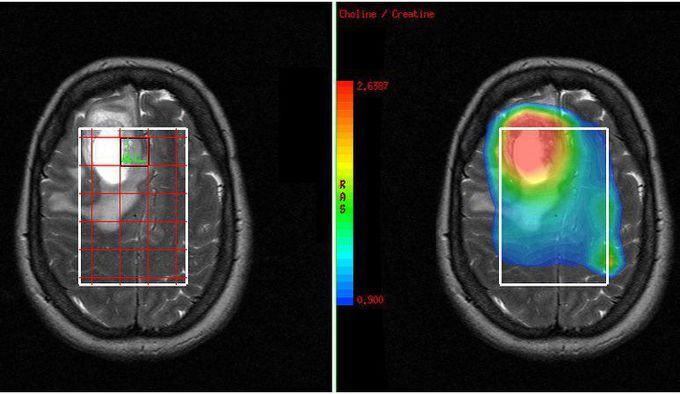


MR Spectroscopy
Conventional MR Imaging (MRI) produces anatomical images with thousands of voxels, whose signals reflect the bulk magnetic properties (e.g., T1, T2, susceptibility, flow etc) of the tissues they contain. MR Spectroscopy (MRS) produces spectra in a small number of (larger) voxels reflecting small metabolite molecules differentiated by their chemical shifts (δ). MRS allows tissue to be interrogated for the presence and concentration of various metabolites. Grossman and Yousem said "If you need this to help you, go back to page 1; everything except Canavan has low NAA, high Choline". This is perhaps a little harsh, however it is fair to say that MRS often does not add a great deal to an overall MR study but does increase specificity, and may help in improving our ability to predict histological grade.

